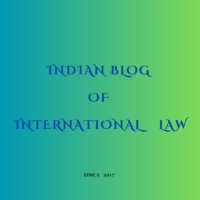[ad_1]
Chhaya Bhardwaj and Suraj Pratim Saikia
The International Court of Justice’s (ICJ/Court) 2025 Advisory Opinion (AO) on Climate Change offers a foundational, albeit cautious, articulation of the principle of common but differentiated responsibility based on respective capabilities (CBDR-RC). The majority opinion characterizes CBDR-RC not as a source of standalone, substantive obligations, but as a “core guiding principle” that manifests the principle of equity (para 148). Its primary function is to guide the interpretation of treaty provisions and inform the content of customary international law obligations, ensuring the equitable distribution of burdens in the global climate effort. This equity is rooted in two key considerations: first, the “historical and current contributions” of States to GHG emissions and, second, their “different current capabilities and national circumstances” (para 148).
The AO meticulously applies this understanding across the climate treaty framework. Within the UNFCCC, CBDR-RC provides the legal basis for differentiation, mandating that developed countries (Annex I of UNFCCC) “take the lead” (para 179), while Annex II countries bear specific duties for finance and technology transfer. The Kyoto Protocol’s binding targets exclusively for developed nations (Annex B of UNFCCC) are affirmed as a direct “application of the principle” (para 179). The Paris Agreement represents an evolution, introducing the crucial qualifier “in light of different national circumstances,” signalling that responsibilities are “not static” (para 436) but must evolve with a State’s current capabilities. Consequently, CBDR-RC legally modulates the “highest possible ambition” required for Nationally Determined Contributions (NDCs) under Article 4(3), specifying that NDC ambition must be calibrated to a State’s specific position on the spectrum of responsibility and capability (para 182). The Opinion’s most significant jurisprudential step is the integration of CBDR-RC into the customary international law duty to prevent significant transboundary harm, particularly through the standard of due diligence (para 457). The Court unequivocally holds that a State’s “capabilities are a key factor” in determining what constitutes using “all the means at its disposal” to fulfil this duty (para 290).
This results in a legally variable “degree of care expected”. States possessing a “well-developed economy and human and material resources” are subject to a higher, more demanding standard of conduct (para 291). Crucially, this standard is “multifactorial and evolutive,” meaning as a State’s capacity increases, “so too are the requirements of diligence heightened” (para 292). The Court underscores that a lack of capacity, however, provides no justification for “undue delay or a general exemption” from the core obligation to take preventive action (para 292). This doctrinal embedding establishes CBDR-RC as the essential framework for dynamically calibrating State obligations across mitigation (via NDC ambition), adaptation, and provision of support, moving beyond rigid historical categories toward a legally recognized spectrum of responsibility based on evolving capability and contribution. While this integration into due diligence marks a significant jurisprudential advance, the framework has drawn criticism for critical limitations, particularly its procedural evasion of historical responsibility as a basis for corrective justice, the enforcement asymmetry inherent in treating CBDR-RC as merely interpretive, and the potential circularity in assessing national circumstances – critiques powerfully articulated in separate opinions by Judges Sebutinde, Yusuf and Xue.
In her separate opinion, Judge Xue critically analysed the position of the Court on the CBDR-RC. Firstly, she is of the opinion that the Court did not delve into the substance of this principle because, in the view of the Court, the principle did not establish any new obligations (para 3). And secondly, the Court exercised unnecessary discretion in interpreting the principle of CBDR-RC by attaching itself to the criteria of development of States and stating that the status of States as developed can change(para 3). According to Judge Xue, this enunciation can have an effect of weakening the understanding of CBDR-RC, instead of strengthening it (para 65).
In the same spirit, Judge Yusuf also was critical of the Court’s understanding of CBDR-RC. He illustrated that the Court attempted to uphold the sovereign equality of States principles by applying a “majestic equality of law” principle for all States, which is a formalistic approach, ignoring the realities of several States, who also submitted such realities in their submissions (para 8). Additionally, Judge Sebutinde also asserted that the Court “downplays” the principle of CBDR-RC by equating it with equity (para 9).
The unanimous view of the Court, combined with the separate opinions, reveals significant divergence in conceptualizing CBDR-RC. The critiques in the separate opinions discussed above highlight several complications in the Court’s exegesis. Firstly, framing development status as a dynamic risk unfairness. This implies that a State transitioning from developing to developed status (e.g., India, aiming for developed status by 2047 through renewable energy) would assume responsibilities equivalent to historical high-emitters. This outcome is inequitable because it deviates from accounting for historical emissions and per capita contributions, even after a State becomes developed. Secondly, the centrality of development implies that responsibility could theoretically decrease if a developed State regresses economically. Such a reduction, however, would be neither fair nor equitable. Thirdly, the Court’s enunciation focuses predominantly on mitigation, with insufficient articulation of CBDR-RC’s role in adaptation. Despite State submissions detailing vulnerabilities and adaptive incapacity, the Court inadequately linked CBDR-RC to adaptation needs. Fourthly, while all States have climate obligations, framing them through sovereign equality overlooks differentiated realities. Finally, while the Court is clear that Annex I States must do more, it introduces ambiguity via the “static development” qualifier drawn from the Paris Agreement. Implications of interpretation of CBDR-RC through this advisory’s lens will only be fully discernible through future subsequent practices on it.
Thus, while the AO’s embedding of CBDR-RC into due diligence marks a foundational advance for dynamic climate obligations, the unresolved tensions among evolving capabilities, historical accountability, mitigation priorities, and formal versus substantive equity underscore the imperative to reconcile doctrinal innovation with intergenerational justice.
(Chhaya Bhardwaj is an Associate Professor at the O P Jindal Global University, and a PhD Candidate at Dublin City University.)
(Suraj Pratim Saikia, an Indian lawyer and serves as an Assistant Editor for the International Organizations Law Review Journal by Brill | Nijhoff.)
Discover more from Indian Blog of International Law
Subscribe to get the latest posts sent to your email.
[ad_2]
Source link

